6 Facts You Never Imagined About The Nearest Stars To Earth

The solar neighborhood is so different than people imagine. But for the first time, we know what it’s like.
When you look up at the stars in the night sky, they appear with different brightnesses, colors, and clustering patterns. But when you see a star, you don’t immediately know whether it’s an isolated star or part of a multiple-star system, whether it’s intrinsically bright or intrinsically faint, and whether it’s nearby or far away. All you know, from a first inspection, is how bright and what color it appears to be. It turns out that most of the stars visible to the naked eye are actually intrinsically very bright, unusually blue, and quite far away. What about the closest stars? While a few of them are bright, nearby, and famous — like Alpha Centauri and Sirius — most of them require special equipment and techniques to find. In 1994, a team of astronomers formed RECONS, the REsearch Consortium On Nearby Stars, to investigate and learn about the nearest stars to Earth. They’ve just released their latest results; here are the highlights.
What RECONS does is take the largest, faintest surveys it can of the entire sky, looking for objects that appear to show a parallax when viewed during different times throughout the year. As the Earth orbits the Sun, it changes its position relative to the other stars in the sky. Just like your thumb appears to move if you hold it at arm’s length and switch viewing it between your left eye and your right, so do the nearest stars move position relative to the more distant background stars when you view them six months apart. Measuring this parallax allows you to directly determine the distance to these stars, and the “nearest” ones are arbitrarily defined to be within 10 parsecs (32.6 light years), which corresponds to a parallax of 0.1″ or greater. Here are the six greatest finds, so far.
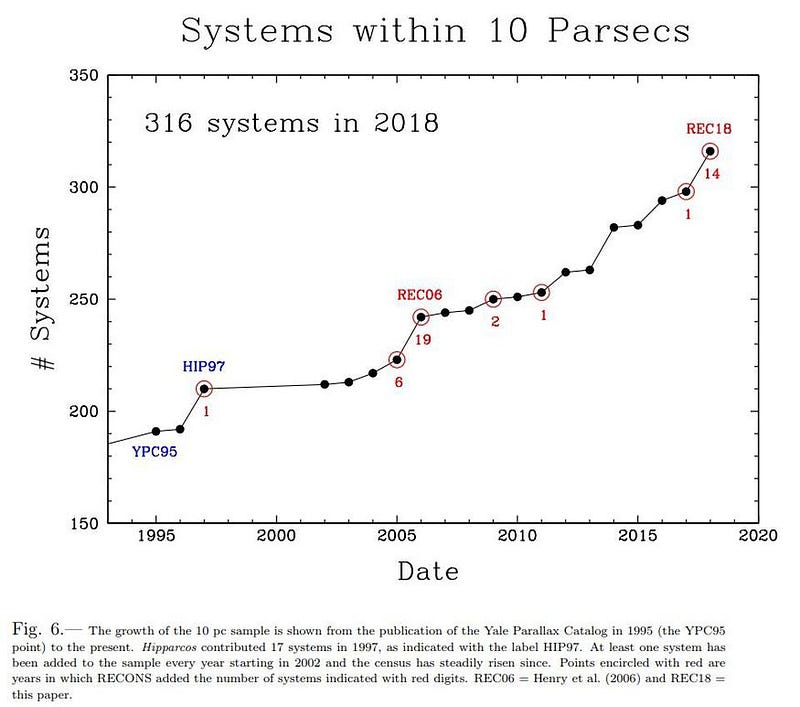
1.) There are 316 discovered star systems within 10 parsecs. This is an incredible improvement over what we knew back at the start of RECONS; the number of known star systems within 10 parsecs was only 191; that number is now up to 316 today. The 125 new star systems that have been added by RECONS and other teams searching for nearby stars represents a 65% increase over the original figure. Additionally, we now have accurately measured parallaxes for all of them. These are all intrinsically faint systems, where of the 125:
- 79 are dominated by red dwarfs,
- 37 by brown dwarfs, and
- 9 by “other” dwarfs such as white dwarf stars.
Many star systems have multiple members; “dominated by” means which class of star is the brightest, most luminous star in the system. With this latest data release, coverage has been so good, thorough, and deep, that the RECONS collaboration has announced that we have now, confidently, found more than 90% of all star systems within 10 parsecs.
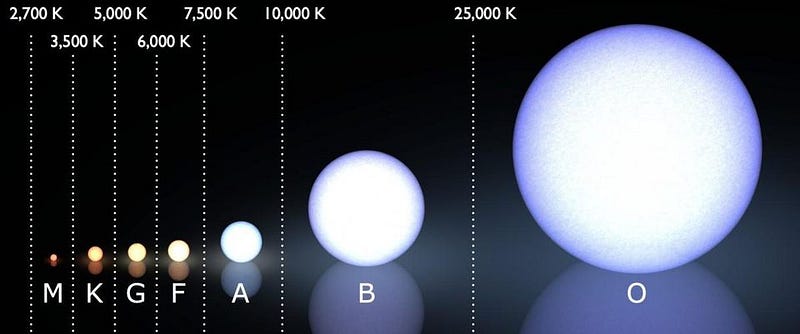
2.) Bright stars are exceedingly rare; the faintest stars are by far the most common. Stars, as we classify them, come in seven different types: O, B, A, F, G, K, and M, arranged from bluest-and-hottest to reddest-and-coolest. These represent stars that are burning hydrogen into helium (or heavier elements) through nuclear fusion in their cores. Brown dwarfs are failed stars that aren’t quite massive enough to become M-class stars, while white dwarfs are the leftover cores of Sun-like stars that have already ended their lives by burning through all of their nuclear fuel. Of these 316 systems:
- 0 of them are dominated by O-class stars (0%),
- 0 of them by B-class stars (0%),
- 4 of them by A-class stars (1.3%),
- 8 of them by F-class stars (2.5%),
- 19, including the Sun, by G-class stars (6.0%),
- 29 by K-class stars (9.2%),
- 222 by M-class stars (66.5%),
- 37 by brown dwarfs (11.7%), and
- 9 by white dwarfs (2.8%).
This tells us that, of the nearby star systems made up of true stars (O, B, A, F, G, K, and M), a whopping 82% of them are M-class stars: the red dwarfs. Our Sun is quite uncommon in the grand scheme of things.

3.) The nearest O- or B-class star is a whopping 79 light years away. That would be Regulus, at the very faint end of the B-class of stars. Regulus is the brightest star in the constellation of Leo, and is overall the 21st brightest star in the sky. The reason O-class and B-class stars are so rare is that they’re both massive and short-lived. Once you get far away from a star-forming region, which the Sun is (being between spiral arms at the moment), it’s only going to be relatively older stars that are in your neighborhood. Regulus, at the low-end of the B-class, has lived for around 1 billion years and doesn’t have much more time left before moving onto the next phase of its life cycle, but as part of a quadruple star system, it’s still hanging in there. But you have to go way past 10 parsecs, out to nearly 25, to find it.
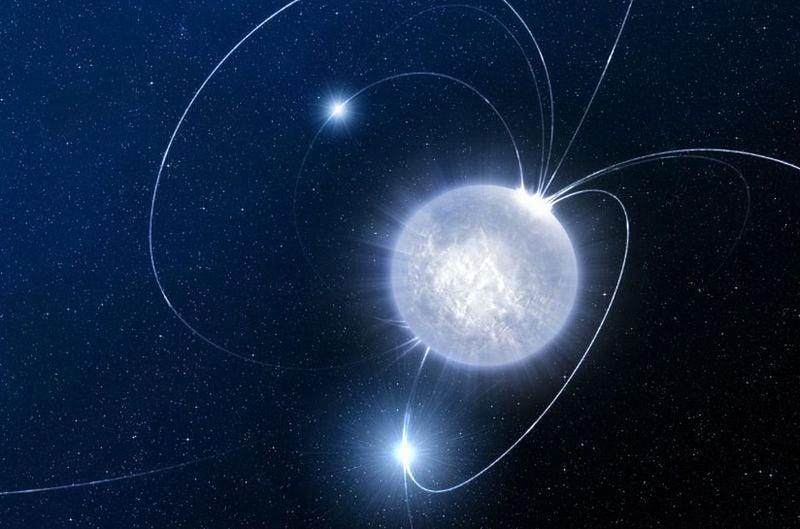
4.) There are no neutron stars or black holes within 10 parsecs. And, to be honest, you have to go out way further than 10 parsecs to find either of these! In 2007, scientists discovered the X-ray object 1RXS J141256.0+792204, nicknamed “Calvera,” and identified it as a neutron star. This object is a magnificent 617 light years away, making it the closest neutron star known. To arrive at the closest known black hole, you have to go all the way out to V616 Monocerotis, which is over 3,000 light years away. Of all the 316 star systems identified within 10 parsecs, we can definitively state that there are none of them with black hole or neutron star companions. At least where we are in the galaxy, these objects are rare.
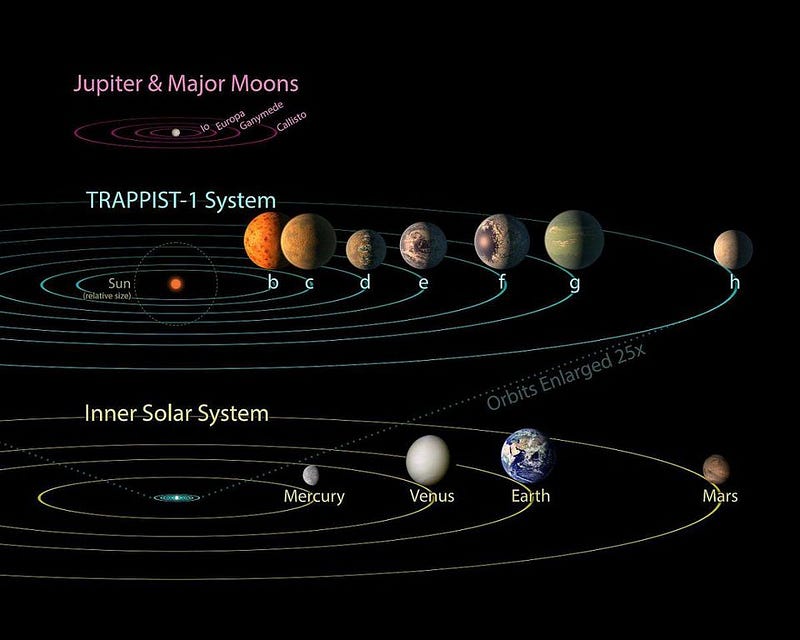
5.) There are currently 56 known exoplanets within 10 parsecs. Despite the fact that there are over 400 known stars within 10 parsecs, only 26 have been confirmed to have planetary systems. The old record-holder was HD 219134, with six confirmed planets and one additional candidate, while the closest is Proxima Centauri b, at a distance of merely 4.2 light years. TRAPPIST-1 just misses out; at 40 light years distant, it’s a shade over 12 parsecs away.
One of the primary missions of TESS, which successfully launched last week, will be to search for transiting planets around these stars. If it finds, identifies, and characterizes them, then future telescopes like James Webb and the 30-meter-class telescopes currently being built on Earth will have a chance to observe them. For the first time, if nature is kind, humanity will be searching for atmospheric signs of life on potentially inhabited worlds around other stars.
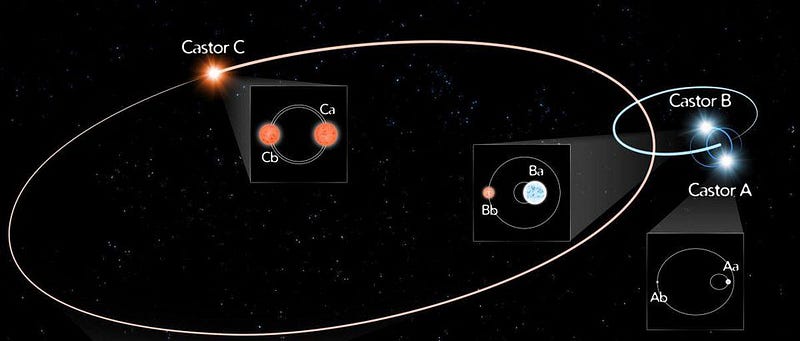
6.) But multiple star systems are very common. We could see this within 10 parsecs easily, where stars like the Sun may be singles, but binaries, trinaries, and more are quite common. The nearest star system to ours, Alpha Centauri, is a triple system, and there are even two quintuple systems, GJ0644 and Alpha Librae, within 10 parsecs. There are well over 100 additional stars that are part of the 316 known systems when you account for the multiple-star nature of what’s out there. But scientists wanted to do better, and so RECONS decided to extend its search over the past decade out to 25 parsecs. In doing so, as of 2014, it had found:
- 1533 single star systems,
- 509 binary systems,
- 102 triple systems,
- 19 quadruple systems,
- 4 quintuple systems, and even
- 1 sextuple system.
That sextuple system, Castor, has been known since ancient times and is the 24th brightest star system in the night sky, at a distance of merely 51 light years away. It is more than 10 parsecs away, but, at 15.7, only barely.
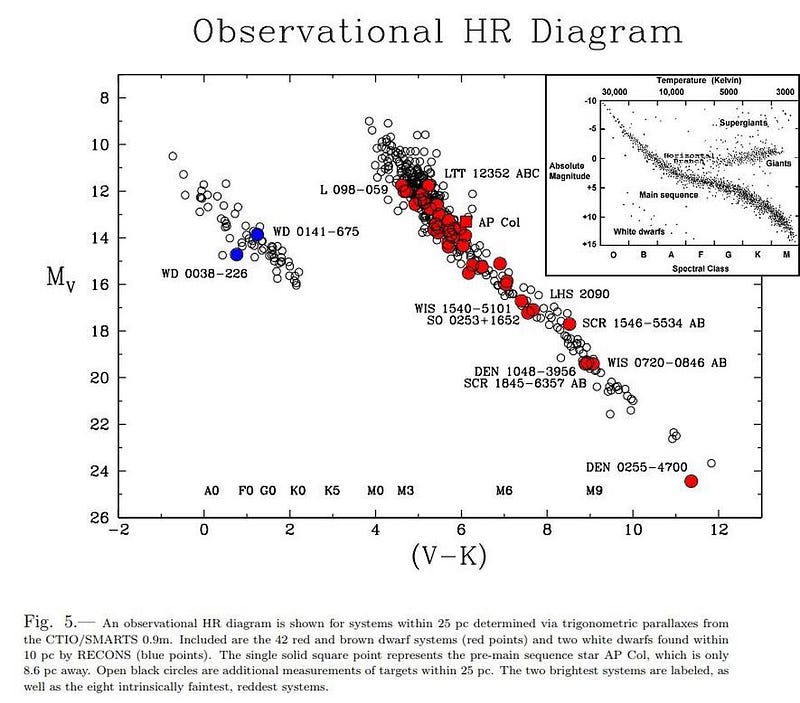
The faintest, lowest-mass systems out there may still have eluded detection within 10 parsecs, and there’s no guarantee that what we’re observing near us is representative of what’s actually in the galaxy and Universe on average. But we’re rapidly approaching the limit of where and how the missing stars could be found; the scientists working on RECONS have confidently stated they’ve almost certainly found nearly all the star systems out there. Based on what we’ve seen, the Sun isn’t a typical star after all, but more massive than about 95% of stars in the Universe. As we move forward, we’ll start answering questions about planets and life, rather than merely stars, when it comes to our local neighborhood. It’s a fascinating time to explore the inner reaches of outer space, including beyond our own Solar System.
Ethan Siegel is the author of Beyond the Galaxy and Treknology. You can pre-order his third book, currently in development: the Encyclopaedia Cosmologica.





